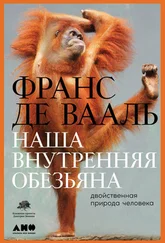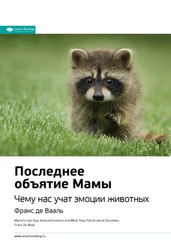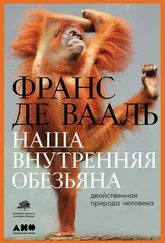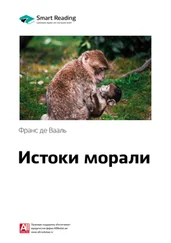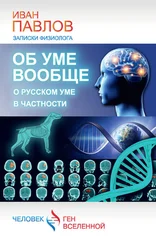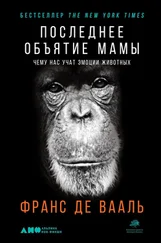Sorge, R. E., et al. 2014. Olfactory exposure to males, including men, causes stress and related analgesia in rodents. Nature Methods 11:629–32.
Spocter, M. A., et al. 2010. Wernicke's area homologue in chimpanzees ( Pan troglodytes ) and its relation to the appearance of modern human language. Proceedings of the Royal Society B 277:2165–74.
St. Amant, R., and T. E. Horton. 2008. Revisiting the definition of animal tool use. Animal Behaviour 75:1199–208.
Stenger, V. J. 1999. The anthropic coincidences: A natural explanation. Skeptical Intelligencer 3:2–17.
Stix, G. 2014. The "it" factor. Scientific American , Sept., pp. 72–79.
Suchak, M., and F. B. M. de Waal. 2012. Monkeys benefit from reciprocity without the cognitive burden. Proceedings of the National Academy of Sciences USA 109:15191–96.
Suchak, M., T. M. Eppley, M. W. Campbell, and F. B. M. de Waal. 2014. Ape duos and trios: Spontaneous cooperation with free partner choice in chimpanzees. PeerJ 2: e417.
Suddendorf, T. 2013. The Gap: The Science of What Separates Us from Other Animals. New York: Basic Books.
Suzuki, T. N. 2014. Communication about predator type by a bird using discrete, graded and combinatorial variation in alarm call. Animal Behaviour 87:59–65.
Tan, J., and B. Hare. 2013. Bonobos share with strangers. Plos ONE 8: e51922. Taylor, A. H., et al. 2014. Of babies and birds: Complex tool behaviours are not sufficient for the evolution of the ability to create a novel causal intervention. Proceedings of the Royal Society B 281:20140837.
Taylor, A. H., and R. D. Gray. 2009. Animal cognition: Aesop's fable f lies from fiction to fact. Current Biology 19: R731–32.
Taylor, A. H., G. R. Hunt, J. C. Holzhaider, and R. D. Gray. 2007. Spontaneous metatool use by New Caledonian crows. Current Biology 17:1504–7.
Taylor, J. 2009. Not a Chimp: The Hunt to Find the Genes That Make Us Human. Oxford: Oxford University Press.
Terrace, H. S., L. A. Petitto, R. J. Sanders, and T. G. Bever. 1979. Can an ape create a sentence? Science 206:891–902.
Thomas, R. K. 1998. Lloyd Morgan's Canon. In Comparative Psychology: A Handbook, ed. G. Greenberg and M. M. Haraway, 156–63. New York: Garland.
Thompson, J. A. M. 2002. Bonobos of the Lukuru Wildlife Research Project. In Behavioural Diversity in Chimpanzees and Bonobos, ed. C. Boesch, G. Hohmann, and L. Marchant, 61–70. Cambridge: Cambridge University Press.
Thompson, R. K. R., and C. L. Contie. 1994. Further ref lections on mirror usage by pigeons: Lessons from Winnie-the-Pooh and Pinocchio too. In Self-Awareness in Animals and Humans, ed. S. T. Parker et al., 392–409. Cambridge: Cambridge University Press.
Thorndike, E. L. 1898. Animal intelligence: An experimental study of the associate processes in animals. Psychological Reviews, Monograph Supplement 2.
Thorpe, W. H. 1979. The Origins and Rise of Ethology: The Science of the Natural Behaviour of Animals. London: Heineman.
Tinbergen, N. 1953. The Herring Gull's World. London: Collins.
–. 1963. On aims and methods of ethology. Zeitschrift für Tierpsychologie 20: 410–40.
Tinbergen, N., and W. Kruyt. 1938. Über die Orientierung des Bienenwolfes ( Philanthus triangulum Fabr.). III. Die Bevorzugung bestimmter Wegmarken. Zeitschrift für Vergleichende Physiologie 25:292–334.
Tinklepaugh, O. L. 1928. An experimental study of representative factors in monkeys. Journal of Comparative Psychology 8:197–236.
Toda, K., and S. Watanabe. 2008. Discrimination of moving video images of self by pigeons ( Columba livia ). Animal Cognition 11:699–705.
Tolman, E. C. 1927. A behaviorist's definition of consciousness. Psychological Review 34:433–39.
Tomasello, M. 2014. A Natural History of Human Thinking. Cambridge, MA: Harvard University Press.
–. 2008. Origins of human cooperation. Tanner Lecture, Stanford University, Oct. 29–31.
Tomasello, M., and J. Call. 1997. Primate Cognition. New York: Oxford University Press.
Tomasello, M., A. C. Kruger, and H. H. Ratner. 1993. Cultural learning. Behavioral and Brain Sciences 16:495–552.
Tomasello, M., E. S. Savage-Rumbaugh, and A. C. Kruger. 1993. Imitative learning of actions on objects by children, chimpanzees, and enculturated chimpanzees. Child Development 64:1688–705.
Tramontin, A. D., and E. A. Brenowitz. 2000. Seasonal plasticity in the adult brain. Trends in Neurosciences 23:251–58.
Troscianko, J., et al. 2012. Extreme binocular vision and a straight bill facilitate tool use in New Caledonian crows. Nature Communications 3:1110.
Tsao, D., S. Moeller, and W. A. Freiwald. 2008. Comparing face patch systems in macaques and humans. Proceedings of the National Academy of Sciences USA 105:19514–19.
Tulving, E. 2005. Episodic memory and autonoesis: Uniquely human? In The Missing Link in Cognition, ed. H. Terrace and J. Metcalfe, 3–56. Oxford: Oxford University Press.
–. 1972. Episodic and semantic memory. In Organization of Memory , ed. E. Tulving and W. Donaldson, 381–403. New York: Academic Press.
–. 2001. Origin of autonoesis in episodic memory. In The Nature of Remembering: Essays in Honor of Robert G. Crowder , ed. H. L. Roediger et al., 17–34. Washington, DC: American Psychological Association.
Uchino, E., and S. Watanabe. 2014. Self-recognition in pigeons revisited. Journal of the Experimental Analysis of Behavior 102:327–34.
Udell, M. A. R., N. R. Dorey, and C. D. L. Wynne. 2008. Wolves outperform dogs in following human social cues. Animal Behaviour 76:1767–73.
–. 2010. What did domestication do to dogs? A new account of dogs' sensitivity to human actions. Biological Review 85:327–45.
Uexküll, J. von. 1909. Umwelt und Innenwelt der Tiere. Berlin: Springer.
–. 1957 [orig. 1934]. A stroll through the worlds of animals and men. A picture book of invisible worlds. In Instinctive Behavior , ed. C. Schiller, 5–80. London Methuen.
Vail, A. L., A. Manica, and R. Bshary. 2014. Fish choose appropriately when and with whom to collaborate. Current Biology 24: R791–93.
van de Waal, E., C. Borgeaud, and A. Whiten. 2013. Potent social learning and conformity shape a wild primate's foraging decisions. Science 340:483–85.
van Hooff, J. A. R. A. M. 1972. A comparative approach to the phylogeny of laughter and smiling. In Non-Verbal Communication, ed. R. A. Hinde, 209 – 41. Cambridge: Cambridge University Press.
van Leeuwen, E. J. C., K. A. Cronin, and D. B. M. Haun. 2014. A group-specific arbitrary tradition in chimpanzees ( Pan troglodytes ). Animal Cognition 17:1421–25.
van Leeuwen, E. J. C., and D. B. M. Haun. 2013. Conformity in nonhuman primates: Fad or fact? Evolution and Human Behavior 34:1–7.
van Schaik, C. P., L. Damerius, and K. Isler. 2013. Wild orangutan males plan and communicate their travel direction one day in advance. Plos ONE 8: e74896.
van Schaik, C. P., R. O. Deaner, and M. Y. Merrill. 1999. The conditions for tool use in primates: Implications for the evolution of material culture. Journal of Human Evolution 36:719–41.
Varki, A., and D. Brower. 2013. Denial: Self-Deception, False Beliefs, and the Origins of the Human Mind. New York: Twelve.
Vasconcelos, M., K. Hollis, E. Nowbahari, and A. Kacelnik. 2012. Pro-sociality without empathy. Biology Letters 8:910–12.
Читать дальше
Конец ознакомительного отрывка
Купить книгу

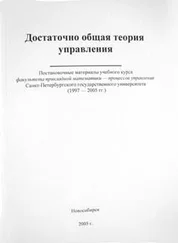
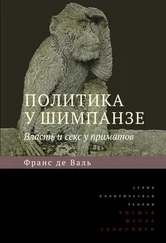


![Франс Вааль - Последнее объятие Мамы [litres]](/books/406055/frans-vaal-poslednee-obyatie-mamy-litres-thumb.webp)

